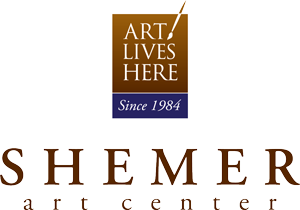Five years ago, I saw an aerial photo of a site in Iraq called the Citadel at Erbil. Erbil is the capitol city of the Kurdish region of Iraq. The citadel is in the center of the modern city of Erbil, which swirls around the old walls of the original citadel. The Citadel at Erbil was built up gradually, over the centuries. It was likely built as a fortified city. In present Erbil, the top of the ancient mound supports multi-story, buff colored, 19th century buildings. The outer walls are quite imposing, showing mostly blank facades with false arched doorways and windows high and inaccessible. The brickwork is laid in diamonds and triangle patterns. Within the walls are small alleys and paths that intersect a dense community of mud brick and fired brick houses and shops.
The photo captured an image that looked like an intricate complex of cubes, spread outward in a spiraling, exponential fashion. When I read that the site had been settled 9,000 years ago and was still inhabited, and had been continually inhabited since it was first settled by the Sumerians, I stared to research the area. A citadel incorporates, protects, covers, and stratifies generations. It is a potent visual symbol that motivates my work. My sculptural work is influenced by archeology and the cross pollination of ideas from culture to culture. In Erbil, I imagined I was seeing a city where all of the stories and visual traditions of the place and people that had lived there and passed through there were buried in the high mound of earth that supported the recent constructions. It seemed like a perfect metaphor for much of my work, and visually it was stunning.
Motivated to start a large project, I realized that I could not complete the piece I imagined, alone. I sent out a call for volunteers. Thus the process became much more that I originally imagined. Rather than a sculpture, it has become a community project, and a piece that embodies the process by which cites are created. Many people have now worked on the Citadel; some almost every day, others just once. Everybody’s contributions are part of the piece, as are everyone’s conversations and ideas about the process. We used clay reclaimed and recycled from local colleges and art centers, so each brick is made out of the work of other artists. If one were to cut a cross section through of one of the bricks, profiles of vessels and sculptures would be revealed. As Erbil was the center of ceramic production in the area, many thousands of pottery shards must be buried in its walls; this aspect of the piece thrills me!
We built each brick using traditional brick making techniques, pounding clay into wood forms. Different layers of the Citadel refer to different phases of the history of the Citadel at Erbil. As each layer was finished by a group of people, the next layer began, covering up the forming and carving of the previous week’s work. Layer by layer the piece grew. We are now on our complex eleventh layer, near the end of construction. The bricks are arranged in a circle of eleven feet, bisected by a passageway. The wall is about a foot deep and the highest sections are close to five feet tall.
The Citadel at Erbil is my visual and historical inspiration. A citadel is of course a military defense, designed to protect citizens from outsider. The Citadel at Erbil has protected 9000 years of human habitation, innovation, development, expectations and achievements and losses. The modern city of Erbil is a vast city. The Citadel sits at the center, and is in disrepair through neglect and time. It is now a protected site and efforts are underway to protect it. When seen from the air it is a stunning sculptural form, its many sections creating a whole. More information about the citadel at Irbil is at http://www.erbilcitadel.org


